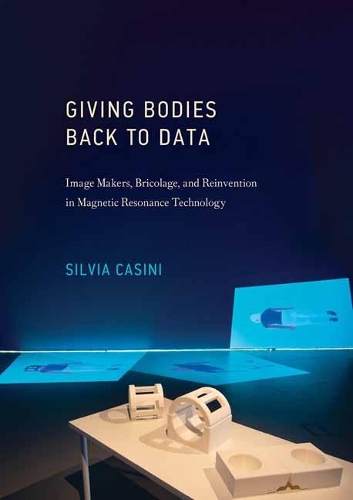
Giving Bodies Back To Data: Image Makers, Bricolage, and Reinvention in Magnetic Resonance Technology
(Hardback)
Publishing Details
Giving Bodies Back To Data: Image Makers, Bricolage, and Reinvention in Magnetic Resonance Technology
By (Author) Silvia Casini
MIT Press Ltd
MIT Press
19th October 2021
United States
Classifications
General
Non Fiction
616.07548
Physical Properties
Hardback
312
Width 178mm, Height 254mm
Description
An examination of the bodily, situated aspects of data-visualization work, looking at visualization practices around the development of MRI technology. Our bodies are scanned, probed, imaged, sampled, and transformed into data by clinicians and technologists. In this book, Silvia Casini reveals the affective relations and materiality that turn data into image--and in so doing, gives bodies back to data. Opening the black box of MRI technology, Casini examines the bodily, situated aspects of visualization practices around the development of this technology. Reframing existing narratives of biomedical innovation, she emphasizes the important but often overlooked roles played by aesthetics, affectivity, and craft practice in medical visualization. Combining history, theory, laboratory ethnography, archival research, and collaborative art-science, Casini retrieves the multiple presences and agencies of bodies in data visualization, mapping the traces of scientists' body work and embodied imagination. She presents an in-depth ethnographic study of MRI development at the University of Aberdeen's biomedical physics laboratory, from the construction of the first whole-body scanner for clinical purposes through the evolution of the FFC-MRI. Going beyond her original focus on MRI, she analyzes a selection of neuroscience- or biomedicine-inspired interventions by artists in media ranging from sculpture to virtual reality. Finally, she presents a methodology for designing and carrying out small-scale art-science projects, describing a collaboration that she herself arranged, highlighting the relational and aesthetic-laden character of data that are the product of craftsmanship and affective labor at the laboratory bench.
Reviews
Giving Bodies Back to Data is a must-read book for a range of readers: whether interested in understanding the journey leading to the development of MRI technology, or the processes of artmaking in an art and science context, they might find themselves becoming inextricably entangled with and benefiting from both approaches.
Roberta Buiani, Leonardo journal
Casinis ambitiously interdisciplinary approachoffers a powerful model for other arts and humanitiesresearchers. It raises pertinent conceptual andmethodological questions about contemporary artpractice as knowledge production, building on the workof anthropology and STS scholars that include TimIngold, and Erin Manning and Brian Massumi.Whilstart history often prioritizes a scholarly focus on the finalvisual output of medical imaging technologies, Casinisapproach suggests that we might be equally well advisedto consider the black-boxed processes through whichsuch images are produced.
Fiona Johnstone, Art History journal
Such detailed and critical cross-disciplinary case studies as Giving Bodies Back to Data in the field of art and science are rare so far, and books like this one provide a more critical and precise account of new imaging technologies than overview studies on image and science.Ultimately, the biggest contribution of Casinis book is the compelling case it makes about the importance of history when dealing with technology. Both those involved in developing new technologies and those who use them would benefit from understanding their situated histories where decisions in their development entangle politics and economics with science, aesthetics, creativity and disciplinary tensions across space and time.
Anca-Simona Horvath and Viola Ruhse, The Senses and Society journal
In total, the book is an eminent contribution to the literature on the embodied and situated practices of data visualizations.
H-Net Network on science, medicine and technology
Author Bio
Silvia Casini is Lecturer in Film and Visual Culture at the University of Aberdeen. Her work has appeared in such journals as Configurations, Leonardo, and Contemporary Aesthetics.
